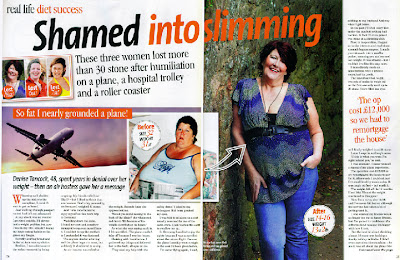BOLD AND UNDERLINED: Contents Page log

I have finished my contents page and put the two pages together. The pictures I didn’t use for my front cover I decided to use for the inside page of my contents page. The model I used for the front picture is the same person I used here; the general feel for the magazine is that it’s relaxed and friendly so I didn’t want pictures that looked too professional. In a different font I have the name ‘BOLD’ but in a different font on the parallel page so that it flows well and it next to the picture of the weeks issue.
The colours by themselves looked really dull so by having the brighter contrasts contrasted with the faded grey it works well. I wanted to be a bit different and instead of having a message from an editor on the far right side I had a letter from an agony aunt – as this is a reality magazine I thought it worked well. However, by having a picture of the agony aunt next to the text it made it look over the top so I took the picture out and just had her name in a signed font at the bottom of the note.
I used the same fonts throughout the page so it didn’t look strange and it made it same well structured and had a good layout, I made sure the fonts (although in different colours – for numbers – and sizes) were similar and worked well together. I did this buy trying out most of the fonts available and choosing the two that worked well together.
I didn’t use all original images on my contents page but I edited them all so that they weren’t completely un-original and my own stamp was on them. Although, for my competition picture it’s a mixture of the two; I edited the picture so that my picture (My Grandmother) stood in front of the Statue Of Liberty
My contents page originally looked like this.
I didn’t want to change too much about it as I liked the agony column and the ‘What Lies Inside’ on the left hand side. However, the layout in the centre of the page did not look well structured it looked too cluttered in some places and the blank section on top right hand side made the whole page look unprofessional and tacky.
In order to make it look better – in my opinion – I firstly took the black outlines off the rectangles around the page and changed the angles of some of the shapes and photos. I didn’t think the overlapped pictures looked effective. Also, I didn’t think they worked well with the story headlines.
Therefore, I took out all the pictures (excluding the front cover screen shot at the top) and deleted them from the page completely. I think took some photos from Google and edited them slightly to work better with the page, I surrounded them in a border in a similar colour to the blue boxes. I gave them short headlines that matched well with those I had already categorised. I moved my text further left and centred it so it filled up the available space better. On the opposite page I had more stories and downloaded pictures but I thought it looked too intimidating and like too much text, in order to make it look more attractive I ditched that idea and using the same girl from my front cover, donated a page completely too her.








